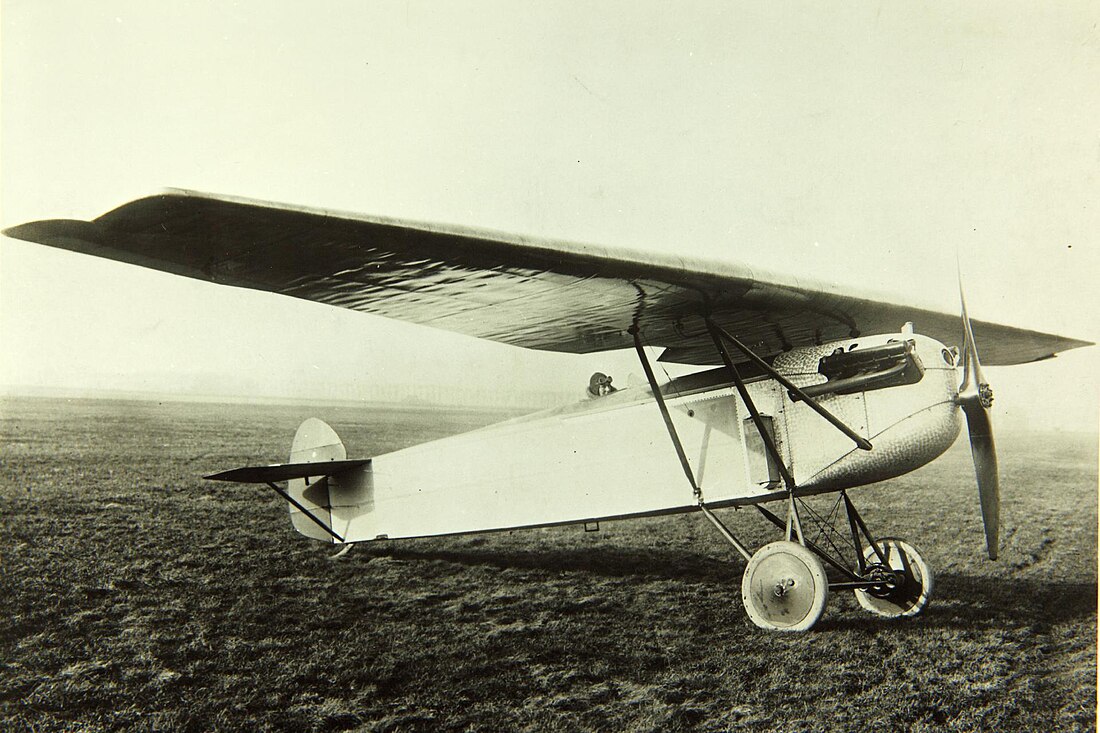Top Qs
Timeline
Chat
Perspective
Fokker D.X
From Wikipedia, the free encyclopedia
Remove ads
Fokker D.X (or D.10) was a Dutch fighter aircraft designed after World War I.

The chief designer at Fokker, Reinhold Platz, designed the Fokker D.VIII fighter in 1918. It was a parasol monoplane with cantilever wings, which was an uncommon feature of the time. Its rotary engine could only develop 82 kW (110 hp), but it had good flying qualities. 60 aircraft were manufactured in Germany.
After the war, Anthony Fokker moved his factory to the Netherlands, where production continued. The D.X was an enlarged development of the D.VIII, which saw limited success. Ten aircraft were sold to Spain and one to Finland, where it was in use 1923-24.
Remove ads
Operators
Specifications (D.X)
Data from Thulinista Hornetiin – 75 vuotta Suomen ilmavoimien lentokoneita[1]
General characteristics
- Crew: 1
- Length: 8 m (26 ft 3 in)
- Wingspan: 14 m (45 ft 11 in)
- Height: 2.95 m (9 ft 8 in)
- Max takeoff weight: 1,250 kg (2,756 lb)
- Powerplant: 1 × Hispano-Suiza 8Fb V-8 water-cooled piston engine, 223 kW (299 hp)
- Propellers: 2-bladed fixed-pitch propeller
Performance
- Maximum speed: 225 km/h (140 mph, 121 kn)
Armament
- Guns: 2 × 7.92 mm (.312 in) LMG 08/15 Spandau machine guns
Remove ads
See also
Related development
Related lists
References
Wikiwand - on
Seamless Wikipedia browsing. On steroids.
Remove ads

